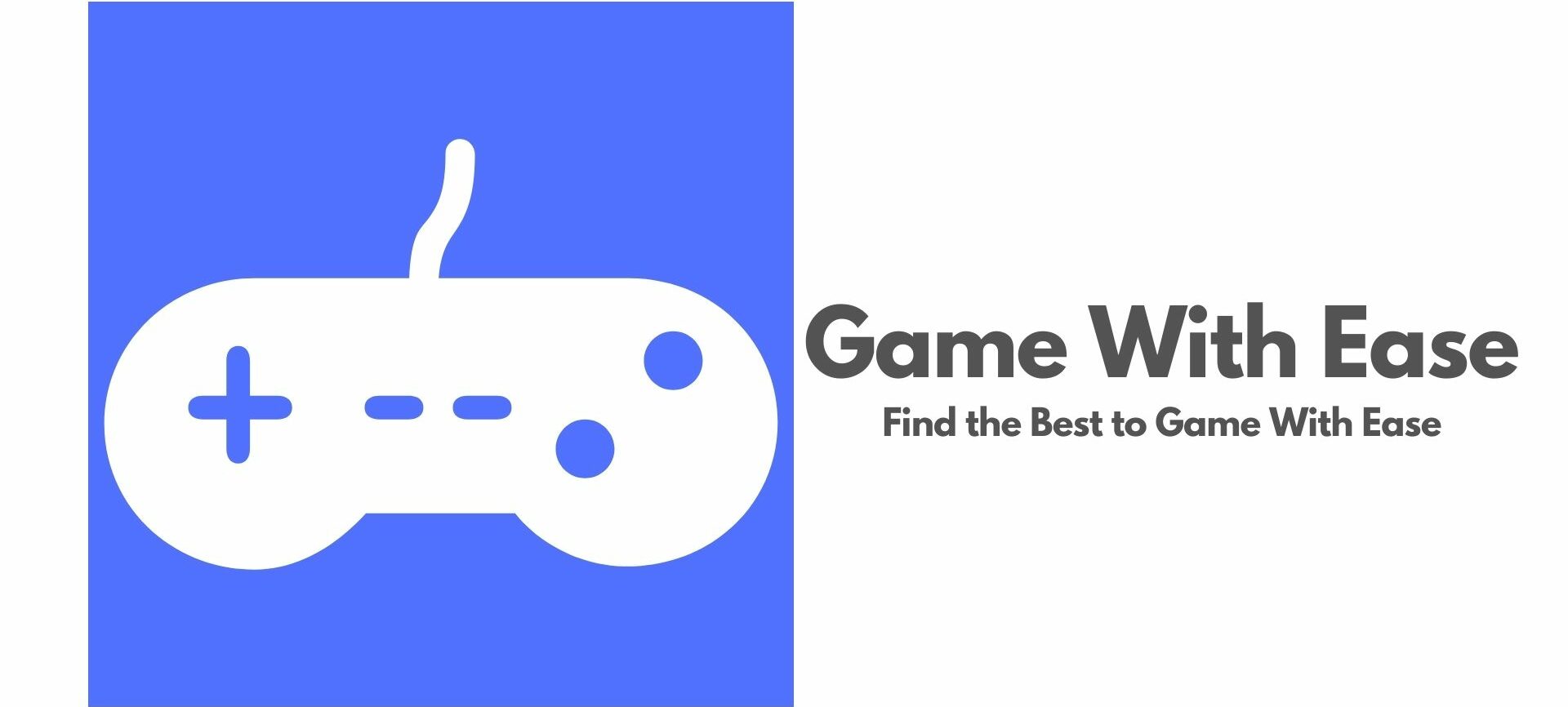Battlefield 1 was released October 21, 2016. Though the mechanics can be somewhat difficult to adjust to. There are some tips anyone playing Battlefield 1 is going to know already. Understanding the basics of the game can help you perform better as a player.
The basics include simple mechanics from the game a player would interact with normally throughout the campaign and online modes. Such mechanics include using weapons, gadgets, equipment, and strategizing in real time.
Online multiplayer will involve getting familiar with loadout classes. Some game modes online include loadout classes for the Cavalry, Tanker, Pilot, and Elite Trooper. These classes are meant to pack some serious resistance. Learning how to best use them is easy but can be tricky at first try.
Want to learn all about these Battlefield 1 beginner tips? Mastering these tips can help create a better playing experience. While tips are important to learn it is also vital to understand the state of the game. Come learn all about the most current state of Battlefield 1 in my post.
Using Weapons, Gadgets and Equipment.
There are all kinds of weapons, gadgets, and equipment a player can use throughout gameplay. In general all these items have their own separate mechanics. There is a time and place for all of this gear. Knowing how and when to use them can help make a player a formidable force on the field. 
Weapons
Are divided by different categories. Self-loading rifles, SMGs, LMGs, rifles, shotguns, sidearms, stationary weapons and an array of different vehicles.
Using Self-Loading Rifles: Most self-loading rifles have a medium to large magazine, fire as fast as you can shoot, and have low or high damage per shot. They are primarily meant for anti-personnel purposes. Loadouts online can include grenade launchers for some self-loading rifles. Rifles in general are best used together with LMGs. Both are capable of supporting each other’s weaknesses.
Using SMGs: Most SMGs have a high fire rate, and perform best in short to mid range combat. Some have higher fire rates than others. Some SMGs have bayonets and some do not. Magazine capacity will vary across each SMG. Taking note of these details can help you understand which SMG will work best in a scenario. SMGs with big magazines usually have no bayonet but do not have to be reloaded as often. These are best used in short range combat. While SMGs with medium size magazines and bayonets are best used in short to mid range combat.
Using LMGs: Most LMGs have a high magazine capacity, and perform best at mid to long range combat. Some LMGs have bipods which allow it mount on flat surfaces. When mounted sustained fire will increase accuracy. On multiplayer all LMGs can be equipped with AA sights. LMGs can be used in close quarters. Some excel at this because of reload speed, damage output, or Damage Per Second. The slow reload rate and slow drift of LMGs make them a poor weapon to use in close quarters. Remaining vigilant of remaining bullets in your magazine can help prevent this issue. LMGs can be used to damage air planes. Any plane flying overhead should be fired upon to pressure apply pressure. LMGs excel at suppressing enemies.
Using Rifles: Most rifles have a low magazine capacity, high damage per shot, and perform best at mid to long range combat. Most have bayonets allowing for an easy way to rid of elite troopers. The low magazine size and slow reload rate are what make these weapons weak in close quarters combat. Rifles are a great way to support the team while trying to make an advance or trying to defend.
Using Shotguns: All shotguns have a low magazine size, devastating damage when most pellets connect at close range, and perform best at close range combat. Most shotguns have a bayonet useful as a last resort on infantry personnel. Sticking to areas that encourage close quarters combat is the best way to find success when using shotguns.
Using Sidearms: All sidearms vary in magazine size, damage per shot, and damage per second. In general sidearms can be useful when in a pinch in close quarter combat. Especially when running around with a Rifle of any kind.
Using Stationary Weapons: Stationary weapons are setup all across maps. Some use heavy artillery shells, anti-aircraft rounds, or high caliber belt fed bullets. Heavy artillery can be used for a number of purposes. They can destroy buildings, provide anti-personnel support, and provide devastating damage on both lightly armored and heavily armored vehicles. AA guns are meant to dispatch aircrafts. They can be used to dispatch infantry and vehicles as well. The problem with using it on infantry and land based vehicles is the exposure to all kinds of enemy fire. Heavy machine guns can prove quite effective at suppressing and dispatching infantry based units. Heavy machine guns can be used against lightly armoured vehicles and cavalry units. Stationary heavy machine guns are prone to being destroyed. This happens because of its vulnerable structure or the inability to repair once it has been destroyed unlike artillery guns and AA guns. Stationary weapons can provide heavy support at the cost of being a big red target constantly giving away your position.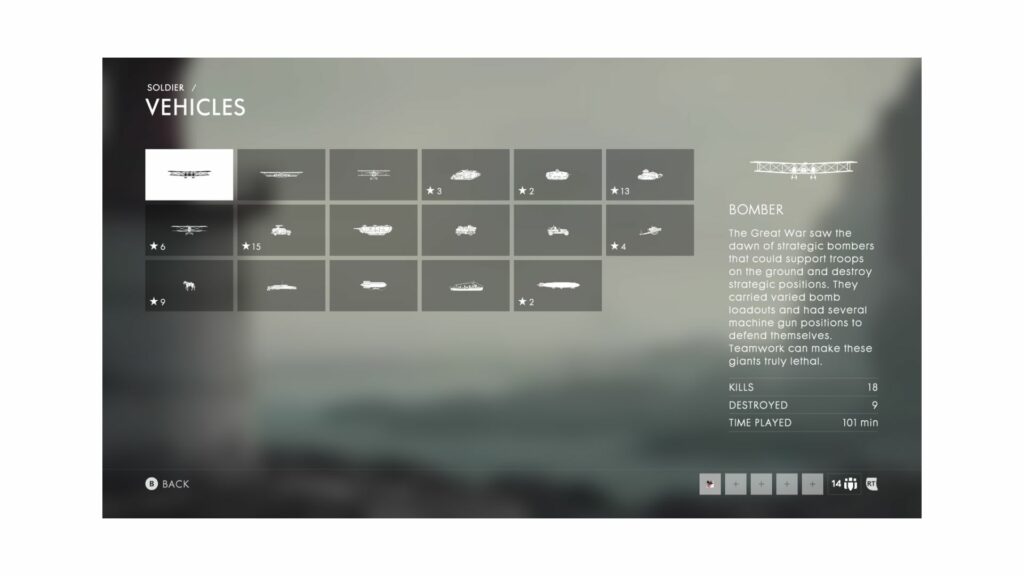
Using Vehicles: Lightly armored vehicles are pretty straightforward using. They serve as a great way to gain a foothold on a map. They are used as transport, anti-personnel support, and attacking deep behind enemy lines. Heavily armored vehicles provide greater protection and more capable firepower than lightly armoured vehicles. There are different versions for each heavy vehicle except the behemoth class. Some versions are meant for anti-personnel purposes, some are meant for anti-tank purposes, and some are meant for providing support. Learning which versions is best suited for what can be found by the description of each version within the loadout menu. Sometimes I encounter teams that run excellently with vehicles. Sometimes I get pitted against teams that excel as infantry. Sometimes I come across teams that excel at both. Using vehicles for what they are best situated for can disrupt any type of team or enemy.
Gadgets
Include grenades and melee weapons. Each grenade has its own purpose and properties. The melee weapons are no different. Your loadout will always have the ability to use gadgets. Picking a loadout that makes sense is the best way to gear up. When I need to run anti-tank measures I usually include Light Tank Grenades and a light and nimble melee weapon. The light tank grenades are for vehicles and the melee weapon for quick and close encounters on infantry trying to escape or getting flanked.
Grenades: There are frag grenades, light tank grenades, gas grenades, incendiary grenades, mini grenades, impact grenades, smoke grenades, and improvised grenades. All grenades are capable of damaging infantry personnel. Not all grenades can damage vehicles. Frag, light tank, mini, impact and improvised grenades do area of effect explosive damage to enemies. Gas and incendiary grenades do damage overtime to enemies. They help provide supporting pressure for your team. Smoke grenades do no damage to enemies but they do help disorientate enemies. Light tank, incendiary, and impact grenades do damage to vehicles. All grenades are meant to suppress and apply pressure to enemies. They do help dispatch enemies but should not be relied upon to do so.
Melee Weapons: Melee weapons are used to dispatch enemies at close quarters. Melee weapons have different values. Most knives are quick, nimble, and take three hits to rid of infantry soldiers. Blunt weapons have the similar properties to bladed weapons. Some heavier melee weapons do more damage and are more versatile. Melee weapons can be used to break barbed wire, wooden structures, glass structures, and some can inflict damage on light vehicles. Be sure to check there traits in the loadout menu. Depending on what you need to be quick and nimble can be helpful. In other circumstances slow but devastating can be what you need.
Equipment
Will vary with intended use. Some are explosive, some are meant for passive use, some are meant to support your team online and others are accessible to every player. Explosive equipment varies with from being hand deployed, triggered by detonation, or is launcher based. Equipment meant for passive use can be used as a means of distraction, reconnaissance, or protection. Equipment intended for supporting your team can be more versatile. They can be used for personal defense or assisting your team’s efforts.
Picking the right loadout will vary depending on the circumstance. I always choose loadouts made beforehand it helps make every encounter go a lot more smoothly. Sometimes you need a loadout to be interchangeable allowing you to deal with infantry and anti-vehicle measures. Other times you will need a loadout that deals with infantry only. I highly recommend creating versatile loadouts for this reason. It allows quicker change in between spawning. If you are looking for a bit more of data on the matter check out the Weapons of Battlefield 1 Wiki page.
Be What You Need to Be With Classes.
Online multiplayer modes enable a player to create their class based loadouts. There are four different types of classes a player can start out as Assault, Medic, Support, and Scout. Using the scoreboard allows a player to see what class each player is using. Knowing this can help determine what class your team needs you to be. All classes are good at what they are named.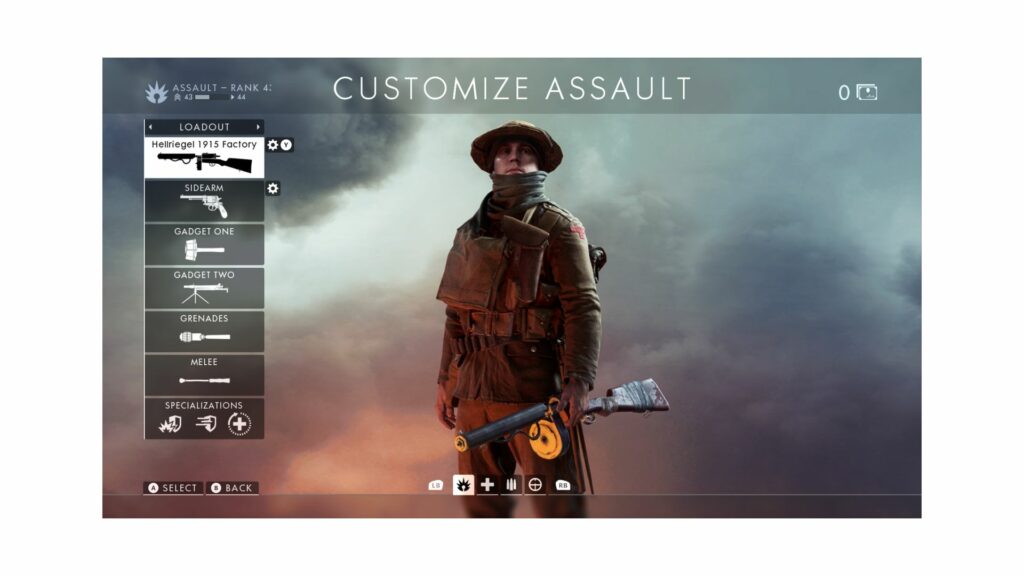
Assault: The assault class can be used against infantry and vehicles. SMGs and shotguns are the primary weapon of the assault class. The equipment for assault loadouts is made up of explosives. This class is best for running offense for your team. A single properly geared assault soldier can take down a tank and some infantry units until a resupply is needed.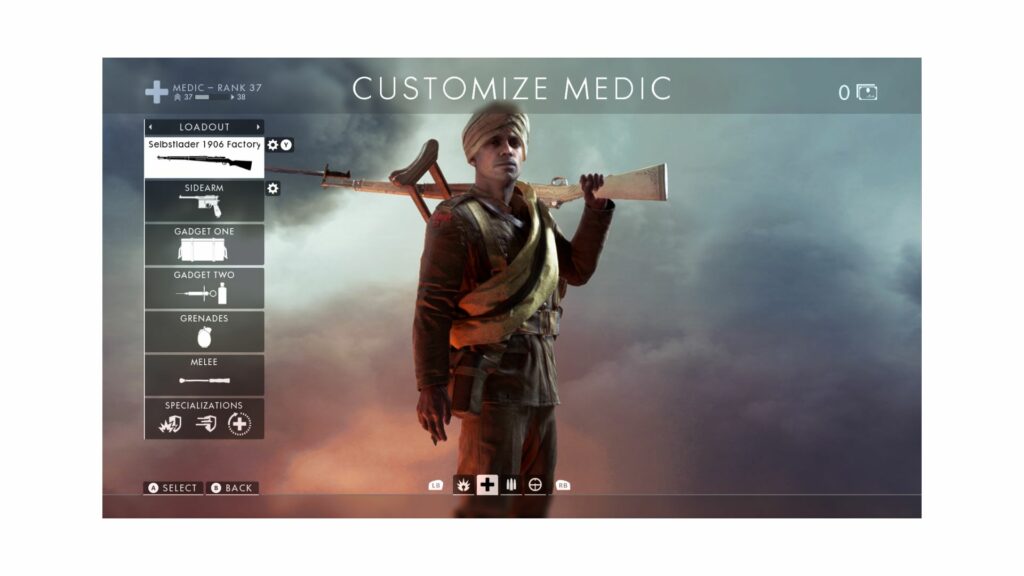
Medic: The medic class is good at providing support for your team. Self-loading rifles and rifles are the primary weapons of this class. The equipment for medics can include the medical crate, bandage pouch, medical syringe, and a rifle grenade launcher with three variants. The frag variant is meant to deal with infantry, the smoke variant is meant to provide visual cover from the enemy, the high explosives is meant to deal small amounts of damage to vehicles. Two or three solid medics on a team can keep the team going with minimum spawn tickets being spent. Mid to long range engagements are where the medic shines best both with weapons and healing capabilities.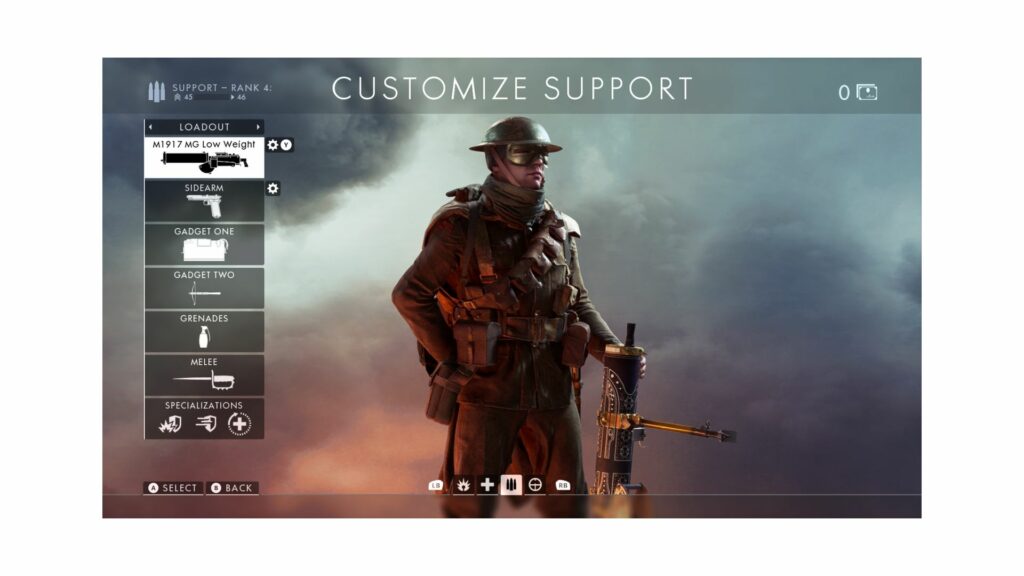
Support: The support class provides support for the team in a different form. LMGs are the primary weapons of the support class. The equipment for support loadouts can include the ammo crate, ammo pouch, two different types of mortars, the limpet charge, and repair tool. The mortar has an air explosive variant and a high explosive variant. The support has a number of options they can support a team. Some solid support classes on a team help keep the team resupplied, repaired to the fullest condition, providing suppressing firing with mortars, grenades, limpet charge, and constant fire from LMG. Support best operate within a mid to long range environment supporting the team.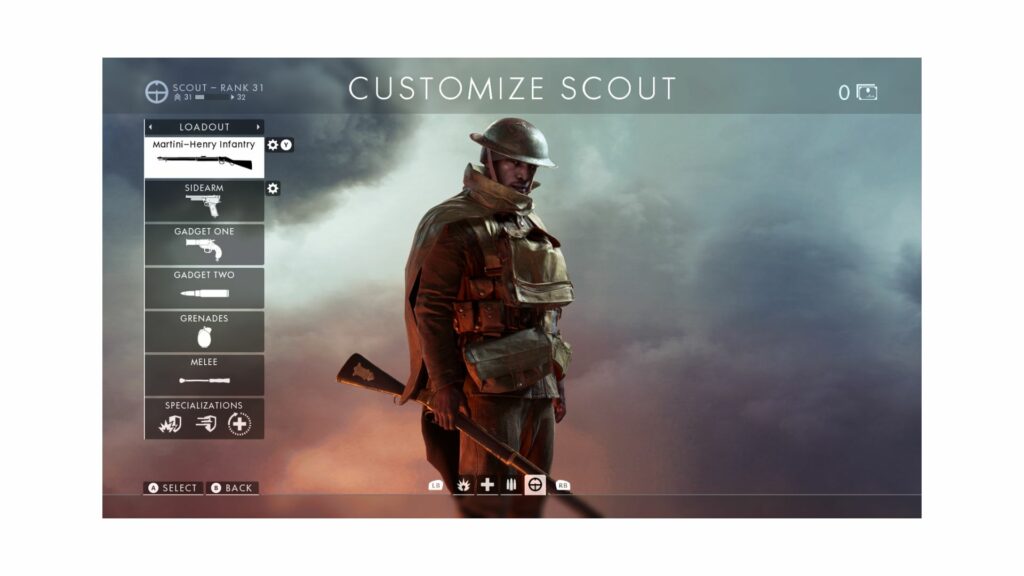
Scout: The scout class is capable of helping the team through reconnaissance means. Rifles are the primary weapons of the scout class. The equipment for scouts can include scouting tools, armor piercing rounds, decoy tools, and tripwire bombs. A couple of scouts on a team can help give a team eyes on the field at all times. Scouts find more success spotting and picking off infantry from mid to long range distances.
While Scouts have more capabilities of spotting, every soldier has the ability to spot enemies. Spotting enemies is always my first move when encountering enemies regardless of class. Whatever your class or current assignment challenge do not forget to play the objective.
Strategize In Real Time
Regardless of whether you are playing campaign or online, strategizing in real time is something every player must be able to do. They are bits and pieces of intel every player can gather to gain situational awareness and build a strategy.
Using the map is one of the best ways to strategize. Any spotted soldiers or vehicles are visible, friendly soldiers or vehicles are shown as well in real time. This bit of intel can help determine a viable spawn point or a good place to start engaging your enemy.
Within a match online a player can pull up the scoreboard to see what class everyone is playing as. Based off of what I see on the map and what I can view in the field my mind gets to work.
Based on everyone’s class I pick one of the four classes along with a viable spawn point. It should not take long to do this since it is a first spawn. Usually with my first spawn I test the waters of my team and the opposing team. Even if I play with the same bunch of people sometimes the teams are divided differently between matches. It can be a one sided scenario or it can be an even match. Remember some teams excel at infantry some excel at running with vehicles. Sometimes there will be teams that excel at both. The first spawn is always a good way to test out what your team is, what the other team is, and where you can find the most amount of success within a match.
Is the Cavalry coming?
You bet your ass they are. Breaking Bad references aside some game modes include the Tanker, Pilot, and Cavalry loadout. In campaign mode you are given a rundown of each class Tanker, Pilot, and Cavalry. As a tanker class you will spawn based on the vehicle of your choice. As a pilot class you will spawn in a plane of your choice. As a cavalry unit you will spawn on horseback as a cavalry unit of your choice. Checking the description for each vehicle or cavalry unit is a must to understand what works best.
Tanker: The tanker class can spawn in as different kinds of land-based vehicles depending on the game mode and map. In general there are three or two different versions for each spawnable vehicle. The tanker loadout has exclusive access to carbines until you reach a certain level. Equipment and gadgets include frag grenade, repair tool, and anti tank grenades. The tanker class has to be able to analyze when and where to operate. Being reckless results in becoming a smoldering hunk of metal.
Pilot: The pilot class can spawn in as different kinds of airplanes depending on the game mode and map. Pilots can take the role of running anti-infantry support, anti-vehicle support, and air support. The pilot loadout also has exclusive access to carbines until a certain level is reached. Equipment and gadgets include frag grenade, repair tool, and spotting flare gun. Pilots have to be aware of what’s on the map at all times while also keep track of what is behind them. AA guns and enemy planes pose some of the biggest threats. Depending on the aircraft, pilots are going to be offensive or lurking in the background. Using planes can be tricky at first but is worthwhile learning. The attack plane for example can hassle infantry and vehicles making it a good all rounder. The bomber class is a bit more clunky, requires more finesse but can play a big part in breaking a team.
Cavalry: Cavalry units are soldiers that ride in on horseback. The loadout is standardized across primary and secondary weapons. The only notable change is in the choice of melee weapon when spawned in. If Battlefield 1: In The Name Of The Tsar is owned the cavalry can be changed from the standard saber sword to a cavalry lance. The primary weapon is a Russian 1895 cavalry variant. Cavalry can be used to help lead a charge or as a means of infiltrating behind enemy lines. Some maps have lumpy terrain and some maps offer flat patches of terrain. Lumpy terrain can be used to navigate away from enemy fire. Flat terrain provides an opportunity to go on the complete offense. Whatever map that offers cavalry can make use of them in some way or another.
Elite Trooper: The elite trooper kits found in some game modes on maps at certain points within wooden crates. Nobody can spawn in as an elite trooper. Each kit provides standardized gear meaning the loadout is the same for everyone. The base game brings two variants of the sentry kit, the flame trooper kit, and the tank hunter kit. The Battlefield 1: They Shall Not Pass DLC introduced the trench raider kit. The Battlefield 1: Turning Tide DLC added the infiltrator kit. All kits except the tank hunter kit are meant to be used against infantry. The tank hunter loadout is specialized for the take down of vehicles. That being said almost all elite trooper kits excel in close to mid range encounters. The tank hunter ideally operates in long range engagements against vehicles and infantry. Scouts with scoped snipers can make short work of any tank hunter from long distances. Any elite trooper should be careful of bayonets charges and melee strikes from the back. Elite troopers can be easily dispatched by melee take-downs.
Support Your Team At All Cost.
Most players will play the objective. Whichever game mode you are playing there is an objective. This means that the objective can be used as a trap. Players from the other team are either on the offense or defense of the objective. The objective is usually a ripe opportunity to score some points. Whether it be as an assault class, medic, support, or scout the objective is always filled with opportunity. Supporting your team can be as simple as playing the objective.
Battlefield 1 supports all kinds of playstyles. There a number of ways a player can analyze what’s going on the map, strategize how to best contribute to the team, and better yourself with each spawn. A mistake is a mistake but you can always learn from a mistake. A video game is a perfect environment to allow this type of development. Everyone has a reason they play video games. I play for the fun of it. Something about achieving small successes against improbable odds is very amusing to me. Be patient with your team, with yourself, if that does not work try a different server. You won’t win every match but you can at least have fun playing each one.
Here is a clip of me getting the drop on enemies.
Did you learn anything helpful from these battlefield 1 beginner tips? If you did leave a comment below. If you have any further relevant questions or comments feel free to drop them below as well.
